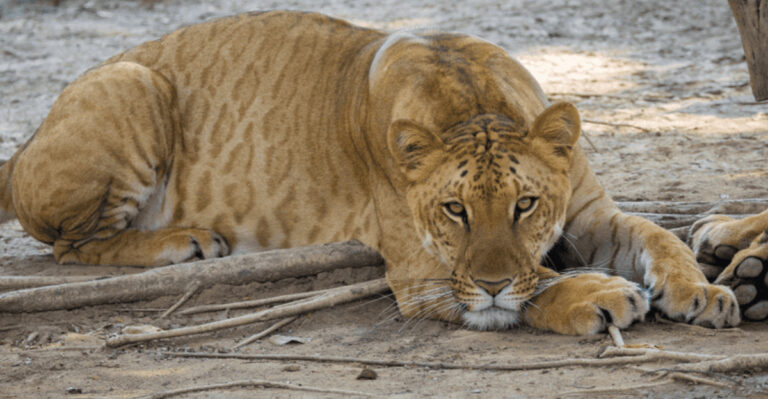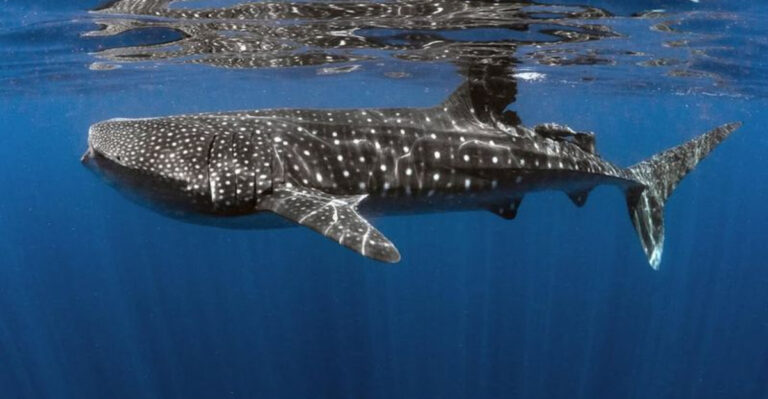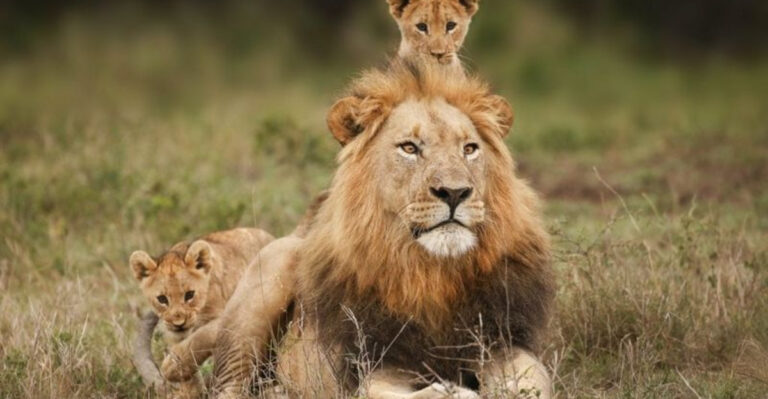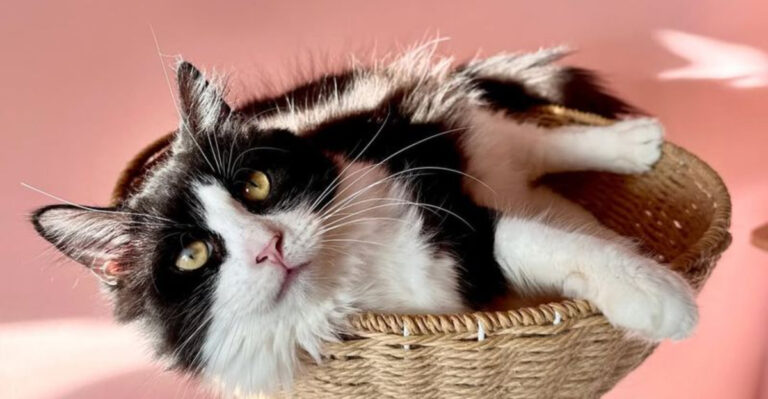9 Birds With The Most Spectacular Mating Dances
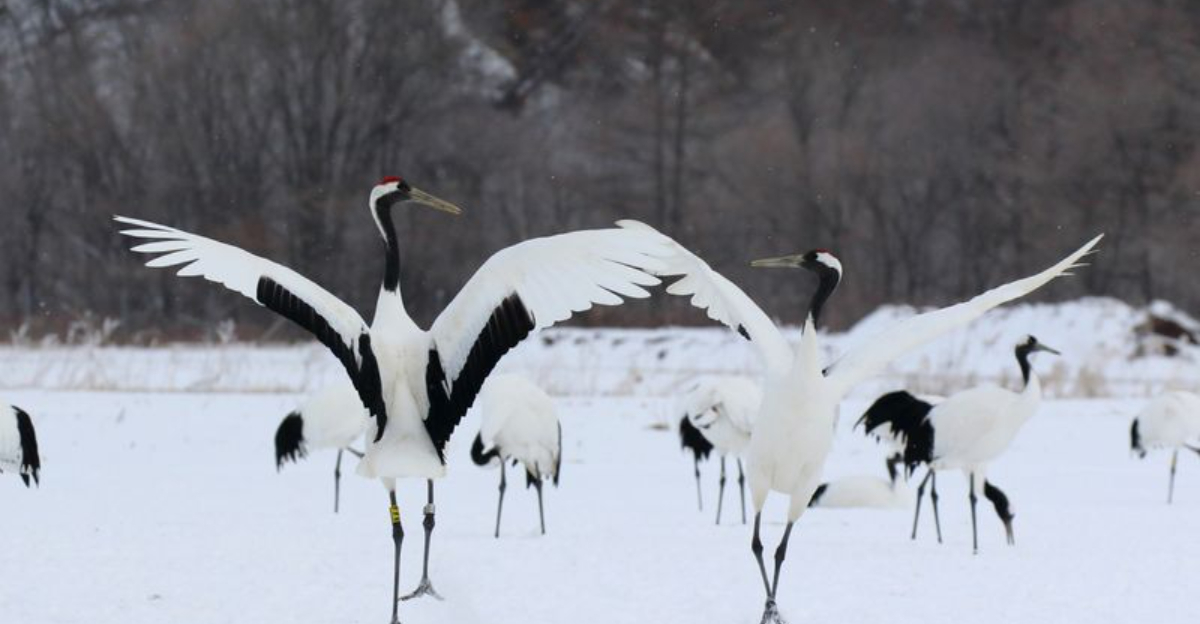
Birds are known for their vibrant plumage and melodious calls, but some species take courtship to an entirely different level with their spectacular mating dances. These avian displays are not only captivating to watch but also play a crucial role in attracting mates.
Here are nine extraordinary bird species known for their fascinating courtship rituals. Each performance is a unique blend of movement, sound, and color, offering a glimpse into the complex behaviors of the avian world.
1. Superb Bird-Of-Paradise
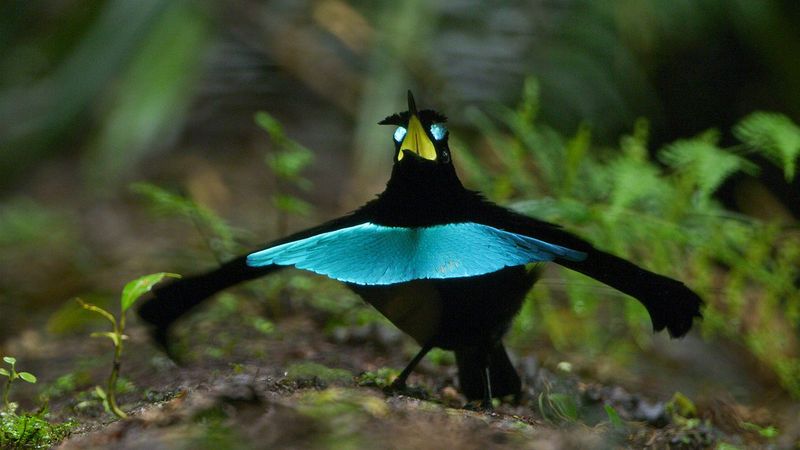
In the dense forests of New Guinea, the Superb Bird-of-Paradise captivates with a dance like no other. This small bird, with its brilliant blue chest and velvety black feathers, transforms into a living spectacle.
The male begins by clearing a space on the forest floor, ensuring nothing distracts from its performance. Once the stage is set, the male unfurls its feathers into a dramatic circular shape, resembling a smiley face.
As it dances, it emits a series of rhythmic clicks and calls, all directed towards an intrigued female perched nearby. The intensity of the display is matched only by the precision of the movements.
Each step, each flutter is designed to mesmerize. The ritual can go on for hours, with the male tirelessly repeating the routine. It’s a show of endurance, beauty, and finesse, all in the hopes of winning a mate’s favor.
2. Red-Capped Manakin
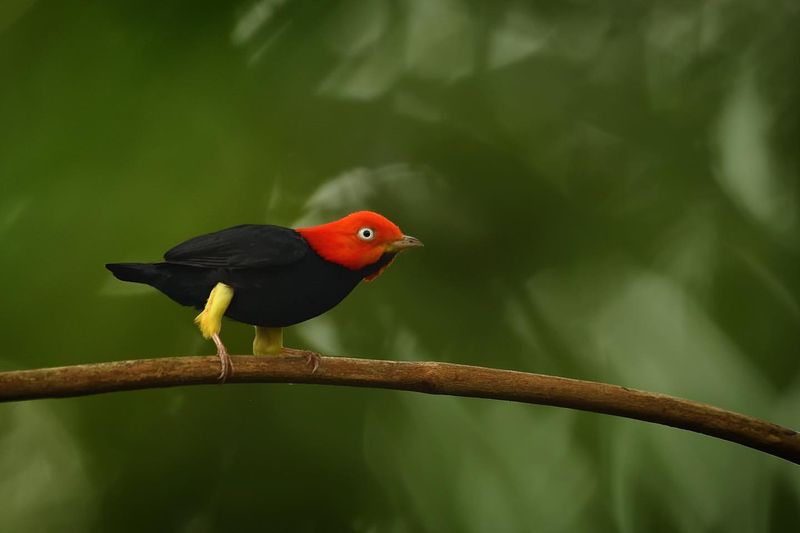
The Red-capped Manakin, native to the rainforests of Central America, is famous for its mesmerizing ‘moonwalk’ dance. This small, striking bird, with a vivid red cap and black body, captivates not just with its colors but with its moves.
During mating season, the male Red-capped Manakin performs a dance routine that mimics the iconic moonwalk, sliding backwards along a branch with incredible agility. This display is both eye-catching and captivating, designed to attract the attention of potential mates.
The dance is often accompanied by rapid wing flutters and a series of sharp calls, adding to the spectacle. These performances are not just about aesthetics; they demonstrate the male’s fitness and agility, crucial traits for survival. Such displays are a testament to the creativity and diversity of avian courtship rituals.
3. Western Grebe
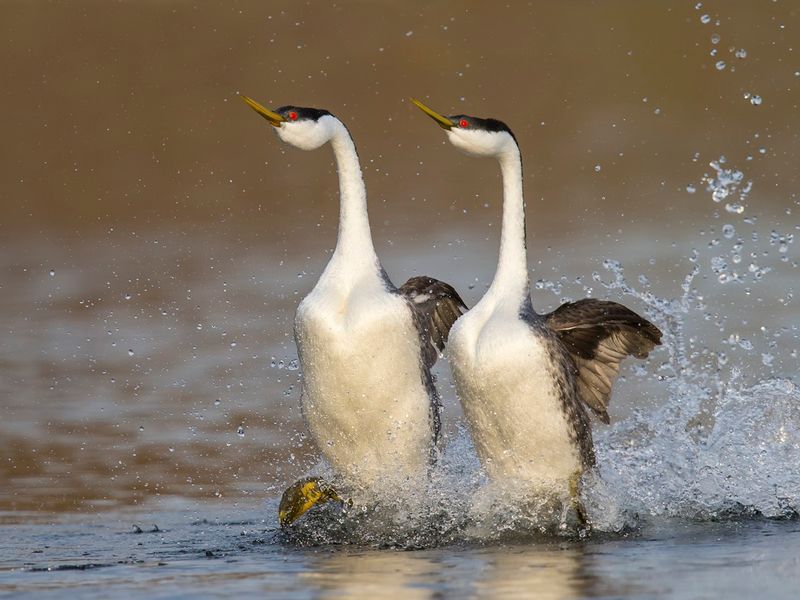
The Western Grebe is renowned for its dramatic courtship dance that takes place on water. Found in lakes across North America, these elegant birds perform a ballet-like sequence that is both graceful and synchronized.
During mating season, pairs of Western Grebes engage in what is known as ‘rushing,’ where they rise up and run across the water’s surface side by side. This intricate dance is a display of unity, strength, and coordination.
The ritual is not just a dance; it is a bonding exercise that strengthens the pair’s connection. Each movement is meticulously timed, showcasing the birds’ exceptional teamwork. Observing this spectacle, one is reminded of the delicate balance and harmony that exists in nature’s courtship rituals.
4. Blue-Footed Booby
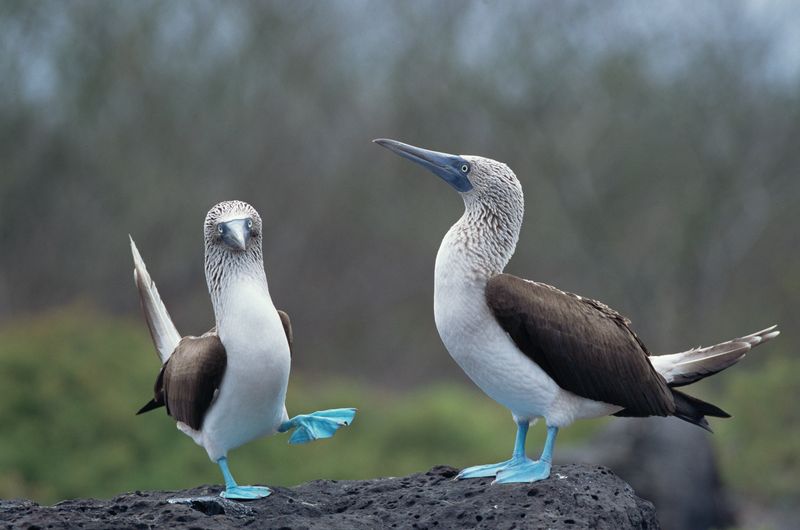
The Blue-footed Booby, native to the Galapagos Islands, is instantly recognizable by its striking azure feet. These vibrant feet play a central role in the bird’s courtship dance, captivating potential mates with their colorful display.
During the mating ritual, the male lifts its feet in an exaggerated fashion, proudly showcasing their vivid blue hue. This foot-raising dance is accompanied by a series of whistles and sky-pointing gestures, creating a rhythmic and engaging performance.
The brighter the blue, the more attractive the male is to females, as it indicates good health and genetic fitness. The Blue-footed Booby’s dance is a vivid reminder of the intricate, colorful world of avian courtship, where even the smallest details can make a significant impact.
5. Greater Sage-Grouse
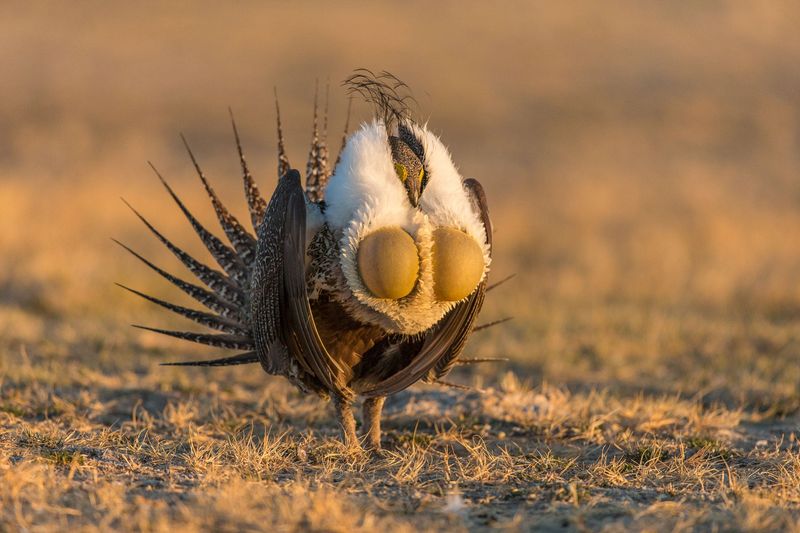
In the open sagebrush plains of North America, the Greater Sage-Grouse performs a courtship dance that is nothing short of spectacular. The male’s display is both visual and auditory, involving the inflation of large, yellow air sacs on its chest.
As dawn breaks, groups of males gather in traditional display areas known as leks. Here, they strut and fan their tail feathers, creating a mesmerizing display of movement and sound. The popping noise produced by the air sacs echoes across the plains, capturing the attention of females.
This dance is a competitive event, where only the most impressive displays win the favor of watching females. The Greater Sage-Grouse’s performance is a testament to the lengths to which animals will go to ensure their genes are passed on to the next generation.
6. Andean Cock-Of-The-Rock
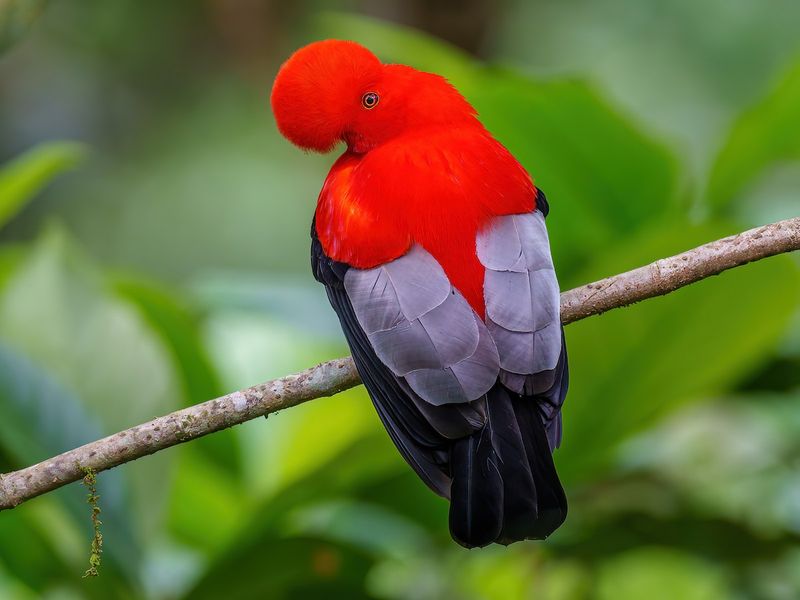
The Andean Cock-of-the-rock, with its vibrant orange plumage, is a standout performer in the cloud forests of South America. Known for their vivid coloration and unique courtship displays, these birds gather in groups known as leks.
In these communal gatherings, males compete for attention by bobbing, squawking, and flaring their feathers in a hypnotizing dance. The contrasting colors against the green backdrop of the forest create a visual spectacle that is hard to ignore.
Female Cock-of-the-rocks watch the performances from hidden vantage points, selecting mates based on their vigor and display quality. This ritual is not just about finding a mate; it is an opportunity for males to showcase their vitality and genetic prowess.
7. Lesser Flamingo
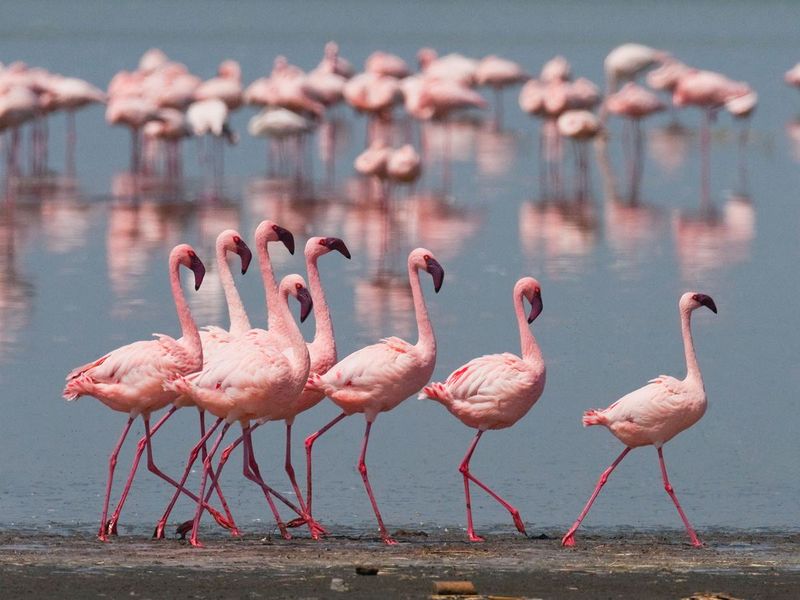
The Lesser Flamingo, found in the saline lakes of Africa, is famous for its coordinated courtship dances performed in large groups. These gatherings, known as ‘flamboyances,’ are a sea of pink as hundreds of birds move in unison.
The courtship dance involves head-flagging, wing salutes, and synchronized marching, creating an enchanting spectacle. The vibrancy of their pink plumage, combined with the rhythmic movements, captivates spectators and potential mates alike.
Such synchronized displays are not just about aesthetics; they strengthen social bonds within the flock and increase the chances of finding a mate. The Lesser Flamingo’s dance is a beautiful example of how collective behaviors play a crucial role in the natural world.
8. Satin Bowerbird
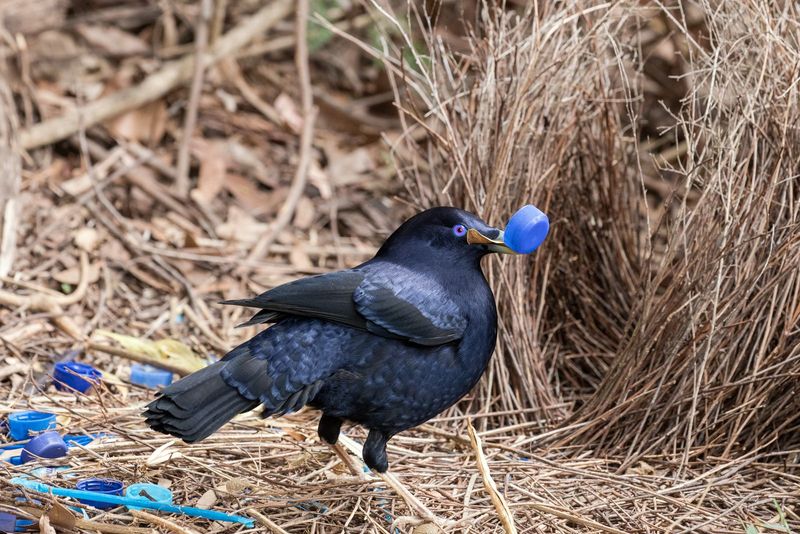
The Satin Bowerbird of Australia is an artist as much as it is a dancer. These birds are known for constructing elaborate bowers, structures made of twigs, meticulously decorated with blue objects to attract females.
Once the bower is complete, the male performs a dance routine around it, showcasing its iridescent plumage and vocal mimicry skills. The dance is accompanied by the arrangement of prized blue objects, adding an element of stagecraft to the performance.
This courtship ritual is a blend of artistry and agility, demonstrating the male’s creativity and resourcefulness. The Satin Bowerbird’s unique approach to courtship highlights the diverse strategies birds employ to attract mates.
9. Japanese Crane
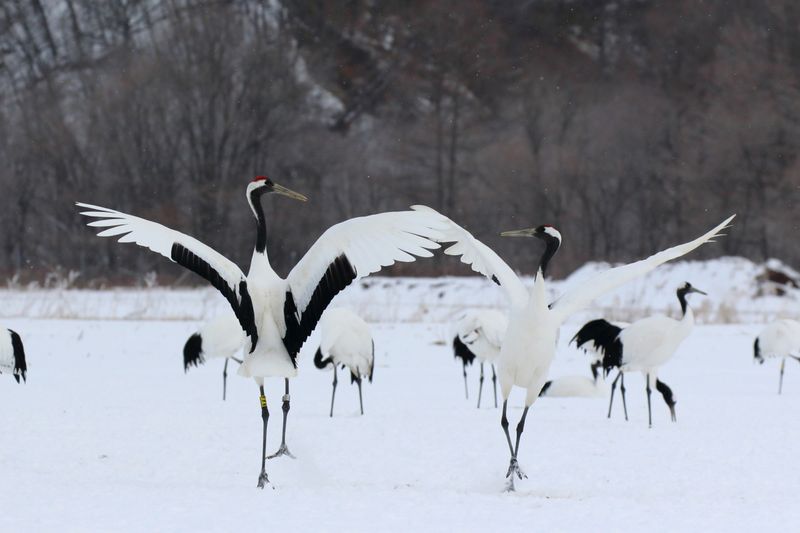
The Japanese Crane, also known as the Red-crowned Crane, is renowned for its elegant courtship dance performed in the snowy landscapes of Hokkaido, Japan. These majestic birds engage in a dance that is both graceful and emotional.
The courtship involves bows, leaps, and synchronized calls, creating a ballet-like performance that is mesmerizing to watch. This dance not only strengthens pair bonds but also serves as a way to communicate and reinforce social connections within the flock.
Witnessing the Japanese Crane’s dance in the serene winter setting is a reminder of the beauty and complexity of nature’s rituals. It is a celebration of life, love, and the enduring bonds these birds form over a lifetime.


